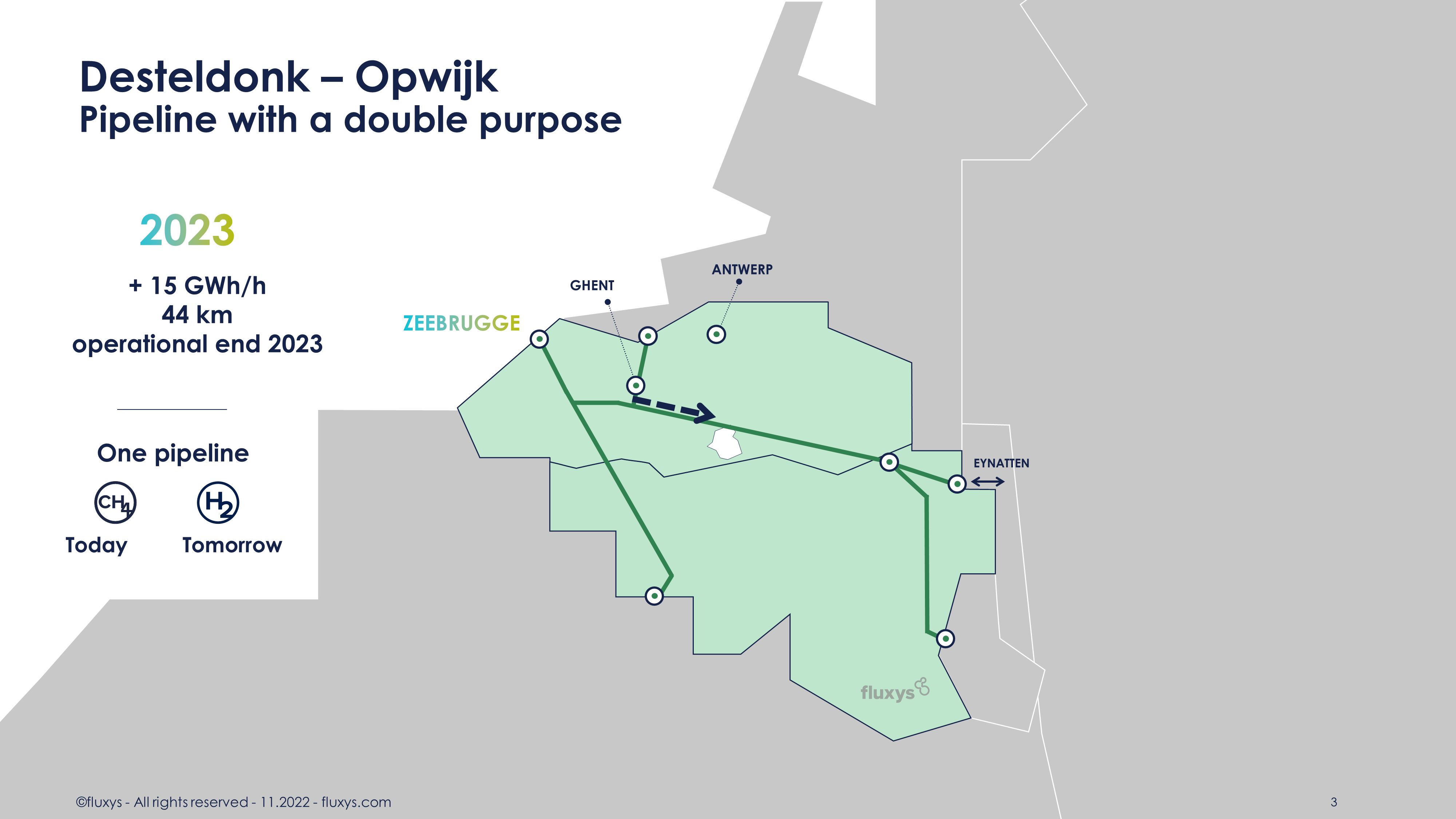Fluxys increases transmission capacity with second Desteldonk-Opwijk pipeline and takes a first step in realising hydrogen ambitions
Infrastructure operator Fluxys Belgium has given the go-ahead for the construction of a new pipeline between Desteldonk and Opwijk. This pipeline will initially increase security of supply for Belgium and neighbouring countries in the context of modified gas flows. It is also an important step in achieving Fluxys' ambitions in terms of energy transition. It is the first strategic investment for hydrogen transport in Belgium. In short, this is a dual-purpose pipeline.
The new pipeline will run parallel to the existing natural gas pipeline between Desteldonk and Opwijk, a total length of 44 kilometres. Work is scheduled to start in March 2023 and be completed by the end of the year.

This expansion of Fluxys' network capacity is vital in view of the changed structure of European gas supply. Doubling the pipeline will increase the offtake capacity from Zeebrugge by 15 GWh/h, equivalent to the energy generated by 15 nuclear reactors.
With this project, Fluxys is anticipating the growth in LNG regasification capacity at the Zeebrugge terminal to avoid creating a bottleneck further down the network. Boosting west-to-east transmission capacity is a key part of Europe's plans.
This pipeline is also the first concrete step in Fluxys' ambition to accelerate the energy transition. The pipeline will be fully future-proof and will be immediately available for hydrogen transport as soon as the market is ready. As such, Fluxys is consolidating Belgium's federal hydrogen strategy, which aims to make the country a European hydrogen hub.
The new pipeline will run parallel to the existing natural gas pipeline between Desteldonk and Opwijk. Following the same route allows Fluxys to make optimal use of space and minimise the impact of construction work. Among other things, Fluxys will work with conservation organisation Natuurpunt to replant the limited number of felled trees in Buggenhout and Herzele.
Pascal De Buck, CEO of Fluxys, says: "With this investment, Fluxys is strengthening its pivotal position in the European energy transmission network and bolstering security of supply in Belgium and neighbouring countries. It is also the first visible step in realising our ambitions on the energy transition, and the development of a European hydrogen hub in Belgium."
- Please feel free to contact us
- Thierry VervenneTim De Vil